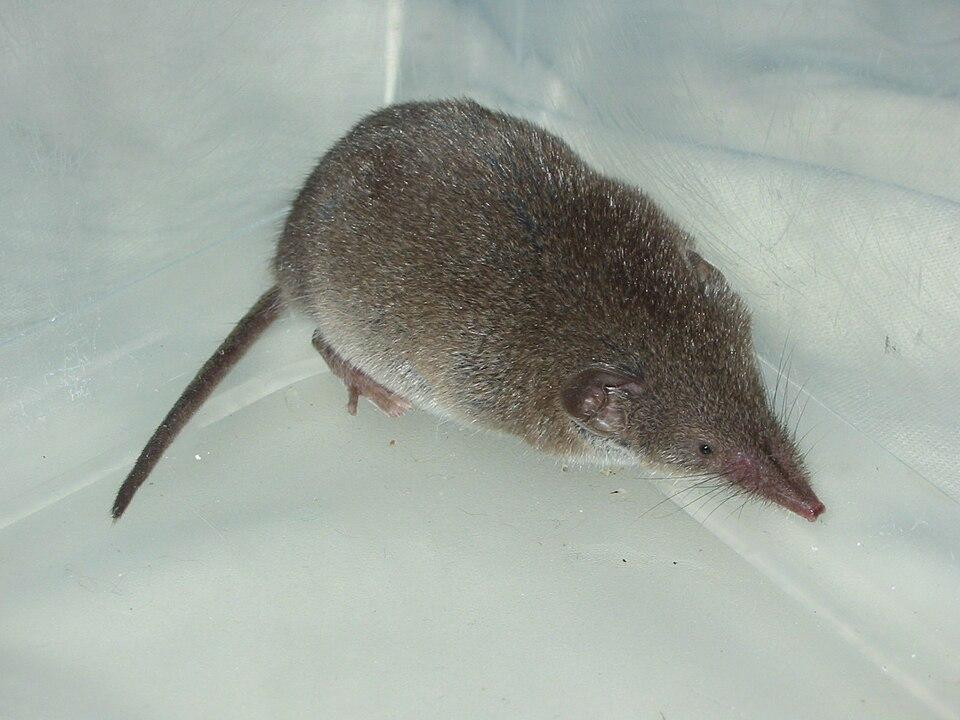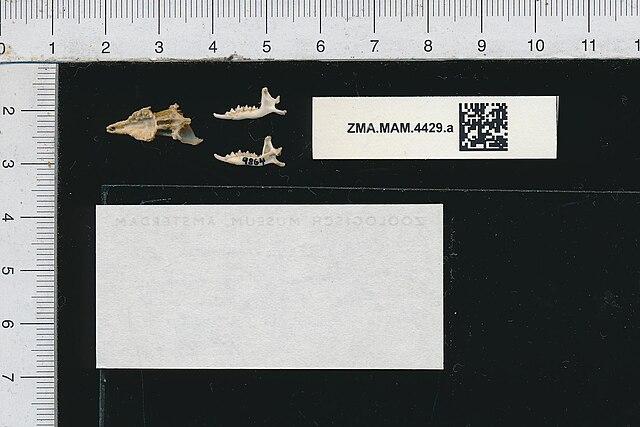
Timelines 10
Man and his Senses 10
Man and his Inventions 10
Geography 10
Fauna 10
Timelines 10
Man and his Senses 10
Man and his Inventions 10
Geography 10
Fauna 10

By the close of a recent field season in western Czechia a small, sharp-nosed visitor quietly rewrote a local checklist of mammals. Trapped by accident while researchers set live traps for house mice, the greater white-toothed shrew turned out to be a species not previously recorded in Czechia! 14 white-toothed shrews were captured during the survey amongst 446 small mammals. The shrew has been registered as the country’s 90th mammal. It was careful trapping and then DNA analysis that revealed the newcomer, a tiny carnivore whose pale, unpigmented teeth give the species its common name and whose appetite for invertebrates (and occasionally small vertebrates) sets it apart from the rodents it superficially resembles. This Czech discovery is seen not merely as a local curiosity but as one more marker of range shifts in a warming Europe: scientists note that the species’ spread north and west is plausibly linked to changing temperatures and altered habitats.
The Czech record is infact modest and precise: a handful of trapped animals and a laboratory confirmation, yet it carries wider meanings. Naturalists and mammalogists watching shrew distributions elsewhere have documented ecological impacts when Crocidura russula expands into new areas: displacement of smaller native shrews and shifts in small-mammal community structure have already been reported in parts of western Europe. The Czech narrative therefore arrives as a small but vivid example of how local inventories and genetic methods together detect continental change.
Half a continent (and many disciplines) away, India’s conservation science has been moving in a different way but toward the same aim: to measure, to understand, and to manage biodiversity. The Wildlife Institute of India (WII) — a national central body for wildlife research and training established in 1982 — carries a broad mandate that explicitly includes conservation genetics and wildlife forensic capabilities. Its website and projects list a dedicated Wildlife Forensic & Conservation Genetics unit and laboratories that support genetic monitoring, population assessment and species recovery programmes across India’s great eco-regions. These are the methods that allow managers to move beyond sighting reports to robust, replicable population estimates and genetic assessments of endangered species.
WII’s recent public reports make this concrete. The Snow Leopard Population Assessment in India (SPAI), a national exercise coordinated by WII and partners, produced the first scientifically rigorous national estimate for the species; the programme’s outputs and related WII reports have been shared by the institute. Elsewhere on WII’s website one finds long-running studbook and monitoring efforts for both snow leopard and red panda, and a suite of projects that treat the Himalayan landscapes as living laboratories for genetics-informed conservation. In short, India’s premier wildlife institute is building and maintaining the technical backbone needed to map population trajectories, detect genetic bottlenecks, and guide interventions.
If WII lends technical depth, the Zoological Survey of India supplies scale. ZSI’s annual compilation — Animal Discoveries 2023: New Species and New Records — assembled the country’s taxonomic outputs for the year and documented hundreds of additions: the 2023 volume records some 641 discoveries, including several hundred species that are entirely new to science and dozens more recorded in India for the first time. Taken together, ZSI’s yearly compilations are a catalogue of Indian biodiversity’s living richness and of the steady, patient work of taxonomists, field biologists and museums that continue to map life even as habitats change. The breadth of those lists is a reminder that while one small shrew can make headlines in Central Europe, in India the story is often told as a continual accumulation of newly understood diversity.
Two narratives meet, finally, at the level of policy and partnership. In January 2024 India and the Czech Republic formalized a Strategic Partnership on Innovation that explicitly names the environment, environmental sciences and researcher mobility among shared priorities. The joint statement lays out an ambition to deepen high-level and academic exchanges, to promote cooperation in biotechnology and environmental research, and to facilitate the movement of scientists for joint projects. That is the framework by which a Czech field team and an Indian genetics laboratory can, over time and by design, collaborate. It makes joint calls for research, shared datasets, and people-to-people links for comparative ecology possible across continents.
The diplomatic line is echoed in practice. The Czech Embassy in New Delhi has hosted insect research exchanges and the launch of a field guide to Karnataka hawkmoths co-authored by Czech and Indian researchers. Czech collections are among the world’s largest for Sphingidae and that a shared research programme had already yielded species not yet catalogued in global registers. Such projects are small, focused, and richly symbolic. Another case study of taxonomic collaboration on moths is as much about specimen cabinets and field notes as it is about building the trust and institutional channels needed for larger, cross-disciplinary work.
Taken together, these threads describe a contemporary conservation geography in which local discovery, national capacity and bilateral policy loop into one another. A shrew trapped on a Czech farm is confirmed as a Mammal by DNA; a snow leopard count is possible because of camera networks, studbooks and genetic labs; a yearbook of new Indian species compiles the labours of taxonomists across states; and a strategic partnership provides tools for future joint projects. Each element matters: field traps and field guides, genomes and government statements, museum drawers and memoranda of understanding.
Where does this leave the reader — and, perhaps more importantly, the policymaker or the young researcher? It leaves them with a modest but firm lesson: biodiversity is simultaneously local and global, easily displaced and well documented. The smallness of a shrew and the grandeur of a Himalayan cat occupy the same intellectual landscape when institutions share tools and data: genetic labs, monitoring protocols, and the diplomatic support to let scientists cross borders and compare notes. The challenge is to ensure that those crossings are not occasional headlines but sustained practice — in the form of continued field surveys, continued taxonomic work and sustained, funded collaboration that binds a yard trap in Czechia to the Indian camera trap in a shared effort to understand and conserve life on our ever changing planet.
Sources
https://tinyurl.com/2cg9gqv9
https://tinyurl.com/25yoryaj
https://tinyurl.com/244vus5h
https://tinyurl.com/29hxl78p
https://tinyurl.com/23tk28n2
https://tinyurl.com/25ugcvnz
https://tinyurl.com/2yj6c3pl